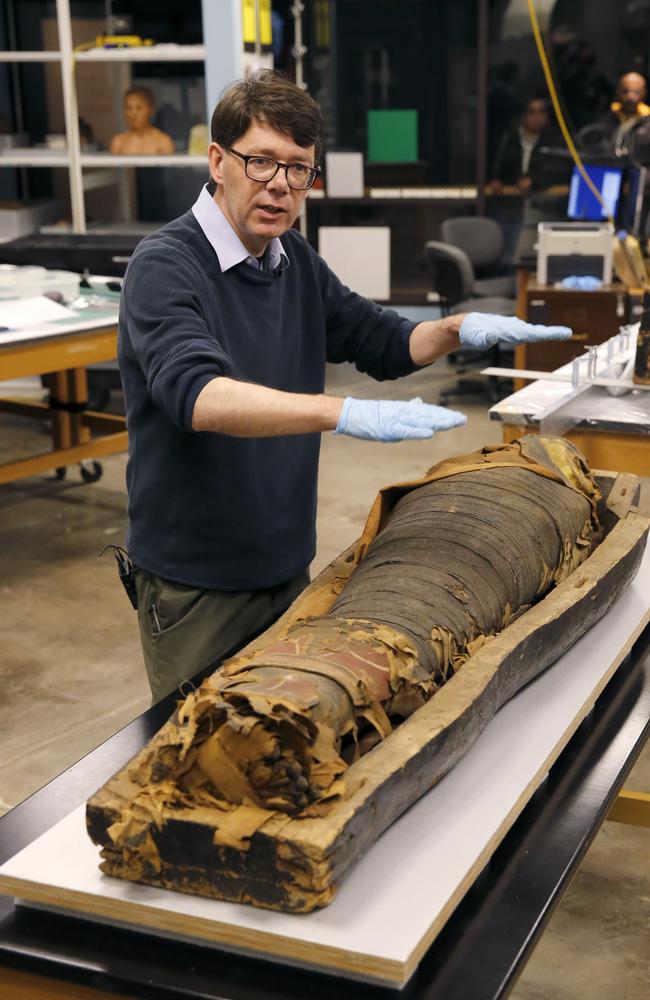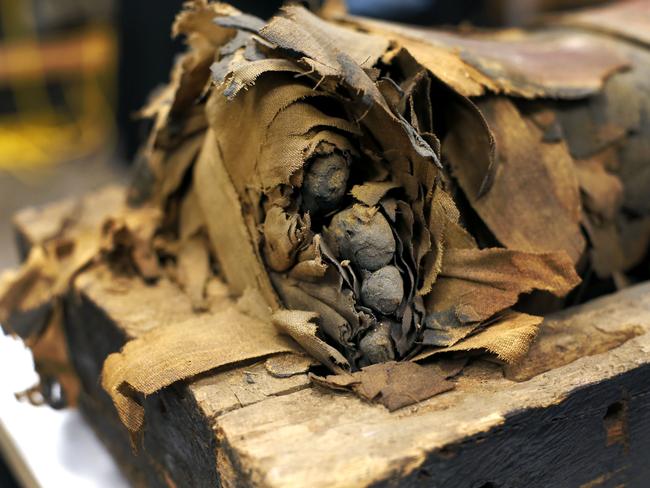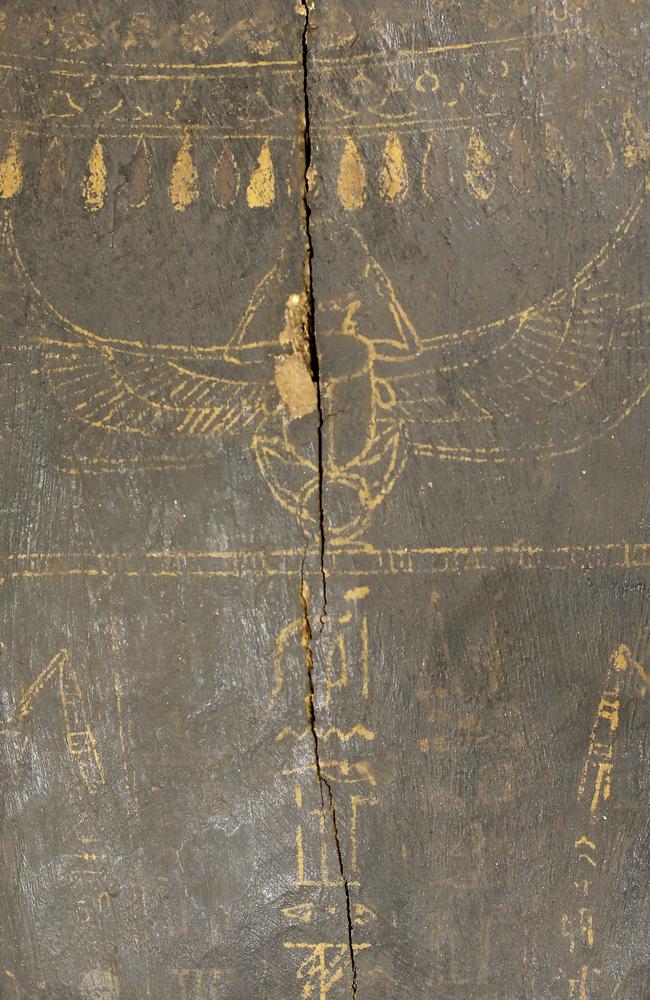The mummy of Minirdis explored
THE lid has been opened on a coffin holding the 2500-year-old mummified remains of an Egyptian boy. So what’s his story?

ONCE the lid was off the wood coffin holding the 2500-year-old mummified remains of a 14-year-old Egyptian boy, scientist J.P. Brown could relax.
The conservator at Chicago’s Field Museum and three other scientists had just used clamps and pieces of metal to create a cradle to lift the fragile lid. Wearing blue surgical gloves, they slowly lifted the contraption containing the coffin lid and carefully walked it to a table in a humidity-controlled lab at the museum.
“Sweet!” Brown said, after helping set the lid down. He later added: “Oh yeah, god, I was nervous.”
The well-planned routine came as scientists started conservation work on the mummy of Minirdis, the son of a stolist priest. The mummy needs to be stabilised so it can travel in the upcoming exhibit, Mummies: Images of the Afterlife, which is expected to premier next September at the Natural History Museum of Los Angeles County. It is expected to travel to the Denver Museum of Nature and Science in 2016.

The Field Museum has had the mummy since the 1920s, when the institution received it from the Chicago Historical Society. It’s part of the museum’s collection of 30 complete human mummies from Egypt.
“There’s always a risk of damage,” said Brown, who did the work in a lab filled with plastic-covered examination tables set behind a large window to let schoolchildren watch his daily work. “So we like to handle these things as little as possible.”

Inside the coffin, there was expected damage. CT scans, which make X-ray images that allow scientists to see inside the coffin before opening it, showed the boy’s feet were detached and partially unwrapped with his toes sticking out. His shroud and mask were torn and twisted sideways. Those also will be repaired.
Brown didn’t worry that the mummy would scatter to dust when opened — something common in the movies. Pieces of the coffin had previously gone missing, exposing the mummy to the elements.

“The last bit of Indiana Jones and all that,” Brown explained before opening the coffin. “That’s not going to happen.”
And it didn’t.
Walking around the opened coffin, Brown pointed and explained the significance of a certain marking, the coloured resin on the linen wrappings or the gilded gold on the mask. If Minirdis had lived, he would have been a priest like his father, Brown said. Scientists don’t know why he died so young.

“The fascinating thing about any mummy is that it’s survived as long as it has,” Brown said. “They’re actually amazingly fragile.”
This kind of work is always painstaking, filled with pre-planning and tests so scientists are prepared for the unexpected, said Molly Gleeson, who works with mummies as project conservator at Penn Museum’s “In the Artifact Lab: Conserving Egyptian Mummies” exhibition in Philadelphia.
“These are unique individuals, unique objects,” she said.
“There’s nothing else like them. If damage were to happen, we can’t put things back together exactly the way they were before.”



